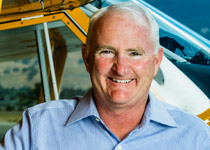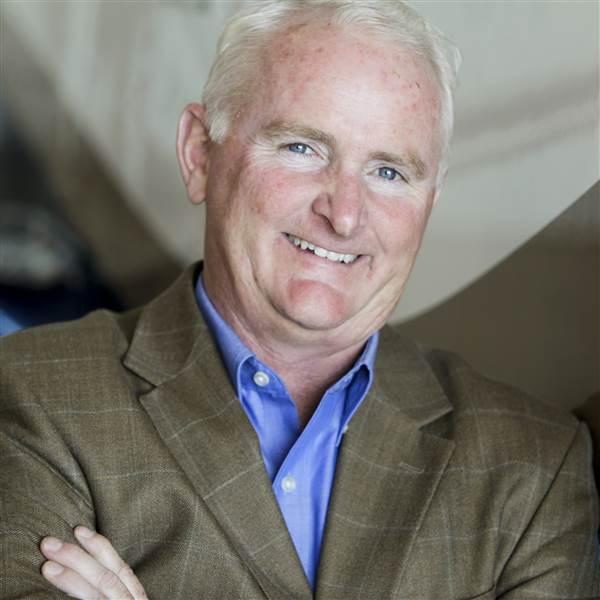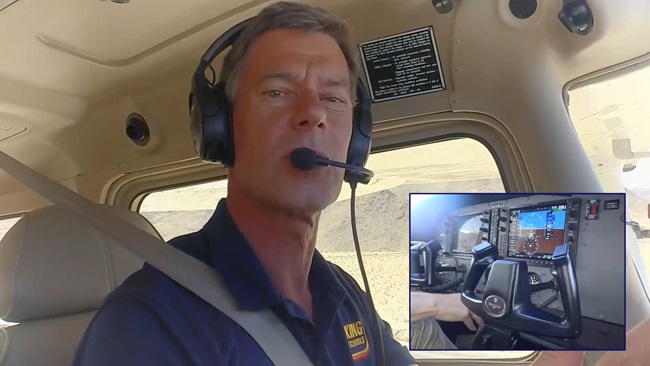President's Position: My year in review
Where we’ve been and where we’re going
 I’ve just completed my first year as AOPA president, so it’s a good time to pause and think about where we’ve been and where we’re going. When I arrived in this role, there were a few key things on my agenda. I wanted to understand what matters to you, our members. Then I wanted to reset the organization to get back to our core competencies and align our resources with your needs. Next, I wanted AOPA to do more to engage with our members, and I wanted to give you more reasons and opportunities to engage with us. And, finally, I wanted to position AOPA to move toward the future.
I’ve just completed my first year as AOPA president, so it’s a good time to pause and think about where we’ve been and where we’re going. When I arrived in this role, there were a few key things on my agenda. I wanted to understand what matters to you, our members. Then I wanted to reset the organization to get back to our core competencies and align our resources with your needs. Next, I wanted AOPA to do more to engage with our members, and I wanted to give you more reasons and opportunities to engage with us. And, finally, I wanted to position AOPA to move toward the future.
Since my first day at AOPA, I’ve traveled the country talking to members, and I can’t tell you how much I’ve enjoyed this part of the job. Our conversations have covered a lot of ground, but a few themes keep coming up—you’re worried about the rising cost of flying; when your freedom to fly is threatened, you want AOPA to act decisively on your behalf; and you don’t want to be burdened with expensive or excessive regulations. I’ve taken your words to heart and they’ve guided us to some important victories in the past year.
We got the FAA to back away from a policy that would have required thousands of pilots to go through expensive and intrusive testing for sleep apnea, even if they had no symptoms of the disorder. And we brought a halt to the unwarranted stops and searches of domestic GA flights by Customs and Border Protection.
Then there’s the biggest issue of all—third class medical reform. I know this isn’t moving as fast as many of you would like. It’s not moving as fast as I would like! But we are making important progress. AOPA worked with members of Congress to get the General Aviation Pilot Protection Act introduced in both houses and build support for it. We now have 146 bipartisan co-sponsors in the House and Senate, which has helped put pressure on the FAA to act. The agency has sent a proposed rule to the Department of Transportation for review. But we know just how slowly government can move, so we’ve worked with the GA industry and key lawmakers to send a series of letters urging Transportation Secretary Anthony Foxx to expedite the review process and open the proposed rule for public comment within 30 days.We’re also continuing to gather support for legislative action. It’s not easy to keep the wheels of government turning, so we will keep up pressure from every direction. We want relief from this outdated, costly, and burdensome rule, and we’ll do whatever it takes to get it.
The steps we’ve taken to reset the organization grew out of our recommitment to putting members first. We started with a careful evaluation of all the programs, products, and services we offered. And we took a good look at our internal structure to make sure we had the right people in the right places. Based on what we found, we eliminated some positions, refocused on our core competencies, recruited some new talent, and cut our expenses to the lowest level since 2006.
Then it was time to turn attention to increasing engagement. We started by switching from an annual national convention to regional AOPA Fly-Ins—seven in all for 2014. Each fly-in lasts just one day, but they bring us to all corners of the country. So far they’ve been a big hit. When we started planning these events, we thought we might get 500 people to come spend a day at the airport with us. But every event we’ve hosted has had four to five times that number of attendees. Best of all, many are people we’d never met before, and they’ve told us how pleased they are to have us at their airports.
These events have proven to be a great way to get to know our members and strengthen the sense of community in the places we visit. And that’s not only good for engagement today, it’s also an important part of my last agenda item—moving to the future. The fact is that to keep general aviation viable, we’ve got to increase GA activity. So over the past year we’ve begun building a comprehensive program to get people flying. We’re welcoming back lapsed pilots with the Rusty Pilots program, which gives pilots the information they need to get back in the air after an extended absence. There are 58 of these classes scheduled around the country, and more than 1,750 people have already signed up.
Through the AOPA Flying Club Initiative, we’re making it easy to find or start a flying club near you. And our Reimagined Aircraft experiment is designed to tangibly bring down the cost of flying. Working with Aviat Aircraft, we’re updating Cessna 150s and 152s from tip to tail (see page 66). When owned by flying clubs, flight schools, or partnerships, these like-new airplanes can be operated for as little as $65 per hour—including fuel, maintenance, finance, and insurance costs.
I think we’ve accomplished a lot in this first year—and it’s just a beginning. I can’t wait to see what we can accomplish in year two.
Email [email protected]
AOPA PresidentMark Baker is only the fifth president in the association’s 75-year history. He took office in September 2013.



